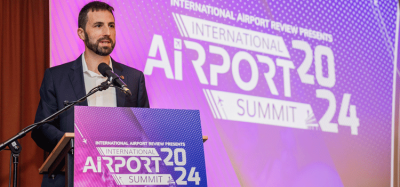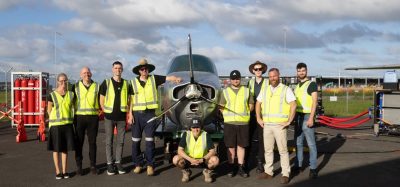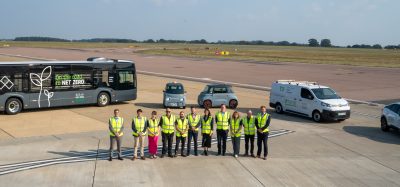While the aviation emissions debate goes on, airports are already delivering
- Like
- Digg
- Del
- Tumblr
- VKontakte
- Buffer
- Love This
- Odnoklassniki
- Meneame
- Blogger
- Amazon
- Yahoo Mail
- Gmail
- AOL
- Newsvine
- HackerNews
- Evernote
- MySpace
- Mail.ru
- Viadeo
- Line
- Comments
- Yummly
- SMS
- Viber
- Telegram
- Subscribe
- Skype
- Facebook Messenger
- Kakao
- LiveJournal
- Yammer
- Edgar
- Fintel
- Mix
- Instapaper
- Copy Link
Posted: 1 October 2013 | ACI-EUROPE | No comments yet
The airport industry released an update on its own voluntary climate change initiative…


As the negotiations at ICAO continue for a deal to put in place a global system to reduce airline emissions, the airport industry today released an update on its own voluntary climate change initiative, Airport Carbon Accreditation. The carbon management certification programme was launched 4 years ago and has gathered steady momentum, expanding beyond its initial European focus, to include airports in Asia-Pacific (including Australia & the Gulf) and Africa.
The independent, institutionally endorsed programme¹ has already won praise from ICAO, UNEP and the EU’s Climate Action Commissioner Connie Hedegaard and Transport Commissioner Siim Kallas. The programme has also just achieved a place in the Top 10 shortlist of the EU’s World You Like Contest, the final results of which will be announced in November.
Olivier Jankovec, Director General ACI EUROPE, Patti Chau, Regional Director, ACI ASIA-PACIFIC and Ali Tounsi, Regional Director ACI AFRICA jointly commented “As the face of air transport on the ground, airports are mindful of the need to actively address their carbon footprints. In the 4 years since the launch of Airport Carbon Accreditation, the programme has really helped frame and support the collective work that airports are doing to make their operations more carbon efficient and their business more sustainable.”
In June of each year, the programme administrator² releases an Annual Report with details of all the airports certified at one of the 4 available levels of certification (‘Mapping’, ‘Reduction’, ‘Optimisation’ and ‘Neutrality’) in the previous 12 months and carbon reductions achieved. In year 4 of the programme, the collective reduction was over 170,000 tonnes of CO2, enough to power 71,000 households for a year.
Initially launched in Europe in June 2009, the institutionally endorsed programme Airport Carbon Accreditation has moved up several gears in the past 4 years, with the support of ACI WORLD. In November 2011, the programme expanded to the Asia-Pacific region, gaining the support of ICAO at that time too. This was followed by expansion to the African region in June of this year, with Enfidha-Hammamet International Airport the first to achieve certification.
As the centrepoints of a complex web of aircraft movements, technical operations and surface access transport, airports can address their CO2 emissions in a variety of ways. These can include better insulation and energy efficiency, switching to green energy sources, investing in hybrid, electric or gas-powered service vehicles, encouraging employees, passengers & visitors to use public transport, working with airlines & air traffic management to reduce runway taxiing times and implement green landing processes and much more.
The programme requires voluntary application by each airport on an annual basis. In Europe, 77 airports in 24 countries are currently certified at one of the 4 available levels of accreditation, including 14 that are carbon neutral. Combined with the certification of 12 airports in the Asia- Pacific region of ACI and 1 airport in ACI Africa’s region, the programme now comprises 90 certified airports. These airports welcome around 22% of global air passenger traffic every year.
Related topics
Related organisations
Airports Council International Asia-Pacific and Middle East (ACI APAC & ME), Airports Council International Europe (ACI Europe)

















